Multiage Programs
Page Navigation
-
History
-
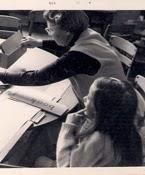 The History of the Multiage Collaborative Learning Community at Orangethorpe
The History of the Multiage Collaborative Learning Community at OrangethorpeThe Multiage Program at Orangethorpe evolved over time beginning in the late 1960’s. Miss Marion Nordberg used her extensive knowledge of educational practices, her wisdom and her consideration of children to develop this very unique program.
Miss Nordberg began teaching 1st grade at Orangethorpe Elementary School in 1962 in a traditional classroom. It soon became apparent to her that many 6 year olds were not ready for the demands of a traditional first grade program. At this time she started a pre-first grade program which could allow the children an extra year to develop their readiness for academic learnings. While she was required to use district standard basal texts, she felt that they did not hold the interest of the children. She attended workshops with Roach Van Allen and Jeanette Veatch who both urged teachers to stop using basal texts in teaching reading.
-
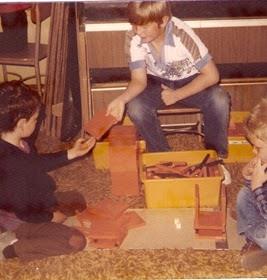 Sylvia Ashton Warner’s “Key vocabulary”
Sylvia Ashton Warner’s “Key vocabulary”(Miss Nordberg’s important words) would be the initial approach to the beginning of reading. Personal writing books would then be followed by the child’s reading of trade books. A complete elimination of basal readers was then accomplished.Combining the aquired knowledge of Roach Van Allen, Jeanette Veatch and Sylvia Ashton Warner, along with her own experience of working with children, Miss Nordberg developed the framework by which she would teach language arts to her students.
-
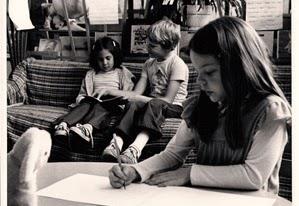 With the addition of an occasional aide, 6th grade student helpers and eventually a parent volunteer (Mrs. Bowen), Miss Nordberg was able to allow her students to go at their own pace in their math trade books, but she felt it was not enough. She then requested to start a “Math Lab” for the children to establish a self paced, hands-on math learning experience using math manipulatives. Her request was granted. The math trade books were then eliminated and in their place the children worked on teacher generated math problems which they solved using math manipulatives.
With the addition of an occasional aide, 6th grade student helpers and eventually a parent volunteer (Mrs. Bowen), Miss Nordberg was able to allow her students to go at their own pace in their math trade books, but she felt it was not enough. She then requested to start a “Math Lab” for the children to establish a self paced, hands-on math learning experience using math manipulatives. Her request was granted. The math trade books were then eliminated and in their place the children worked on teacher generated math problems which they solved using math manipulatives.
-
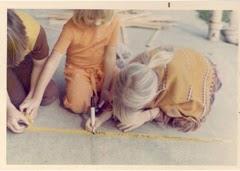
In the Late 60’s Miss Nordberg visited England with a group called the International Center for Educational Development. They visited non-graded primary schools. Here Miss Nordberg was introduced to the concepts of integrated-day, where children were allowed to choose to participate in reading, writing and math activities during a large block of time.
As the program’s popularity grew, students were turned away due to lack of space. This led to taking down walls to join classrooms.
-
Miss Nordberg’s love of nature was something she used to peak the children’s interest in learning. She provided an environment full of plants and animals for the children to watch, care for, and handle. Science experiments included raising silkworms, and learning about grunion among others. Of her classroom environment Miss Nordberg wrote the following:
"Knowing what to write about is seldom a problem in our busy classroom where the natural language interaction among children is constant. Ideas flourish and are constantly embellished. Children write of their feelings of love, hate, anger, fear, and sorrow. They write about their real or imaginary experiences. TV for many is a stimulus which sparks their imaginations and delightfully creative stories and illustrations result. Some enjoy doing research on timely topics i.e., tarantulas, katydids, or a bat – all of which have been a part of our classroom environment. Writing and illustrating books to be placed on our special shelves reserved for class authors is an honor enjoyed by many."
-
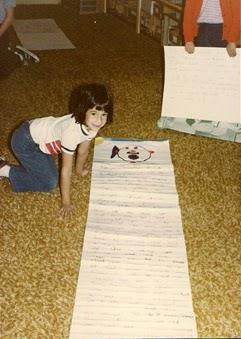
Miss Nordberg’s classroom continued to grow in popularity and through the requests of parents she added 3rd graders and eventually added Kindergarteners as well. With the expansion of the grade levels from K-3, children progressed through the program at their own pace within 2 to 5 years. In 1984, parent participation became mandatory due to the program’s popularity and the class size.
Over time, Miss Nordberg continued to take into account the needs of the children and modified the program based on these needs. When a kindergartener brought a stack of computer paper and asked her to write words on it to simulate a dictionary, she came to the conclusion that kindergarteners should have dictionaries as well. When a child refused to use print but instead wanted to use cursive writing, she allowed him to do so. He actually excelled at writing in cursive. She then allowed any child to do cursive writing before 3rd grade if they requested it. When a Kindergartener began to cry about leaving earlier than the other students, Miss Nordberg allowed the Kindergarteners to stay all day. There were many instances where the children voiced their needs and she listened to their requests and made the necessary changes.
Miss Nordberg credits the success of the Multiage Program at Orangethorpe to the children, the parent volunteers, Mrs. Bowen, and the many teachers who worked in the classroom: Mrs. Caron, Joe Winder, Tom Cope, Denise Koolmees, Roger Prasser and Mr. Rich.

